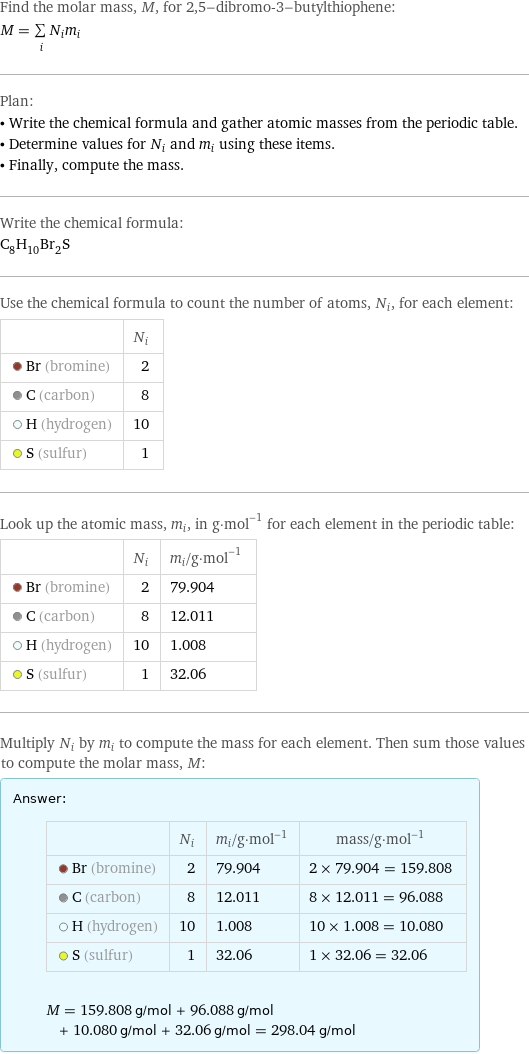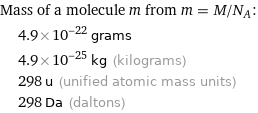Input interpretation

2, 5-dibromo-3-butylthiophene | molar mass
Result

Find the molar mass, M, for 2, 5-dibromo-3-butylthiophene: M = sum _iN_im_i Plan: • Write the chemical formula and gather atomic masses from the periodic table. • Determine values for N_i and m_i using these items. • Finally, compute the mass. Write the chemical formula: C_8H_10Br_2S Use the chemical formula to count the number of atoms, N_i, for each element: | N_i Br (bromine) | 2 C (carbon) | 8 H (hydrogen) | 10 S (sulfur) | 1 Look up the atomic mass, m_i, in g·mol^(-1) for each element in the periodic table: | N_i | m_i/g·mol^(-1) Br (bromine) | 2 | 79.904 C (carbon) | 8 | 12.011 H (hydrogen) | 10 | 1.008 S (sulfur) | 1 | 32.06 Multiply N_i by m_i to compute the mass for each element. Then sum those values to compute the molar mass, M: Answer: | | | N_i | m_i/g·mol^(-1) | mass/g·mol^(-1) Br (bromine) | 2 | 79.904 | 2 × 79.904 = 159.808 C (carbon) | 8 | 12.011 | 8 × 12.011 = 96.088 H (hydrogen) | 10 | 1.008 | 10 × 1.008 = 10.080 S (sulfur) | 1 | 32.06 | 1 × 32.06 = 32.06 M = 159.808 g/mol + 96.088 g/mol + 10.080 g/mol + 32.06 g/mol = 298.04 g/mol
Unit conversion

0.29804 kg/mol (kilograms per mole)
Comparisons

≈ 0.41 × molar mass of fullerene ( ≈ 721 g/mol )

≈ 1.5 × molar mass of caffeine ( ≈ 194 g/mol )

≈ 5.1 × molar mass of sodium chloride ( ≈ 58 g/mol )
Corresponding quantities

Mass of a molecule m from m = M/N_A: | 4.9×10^-22 grams | 4.9×10^-25 kg (kilograms) | 298 u (unified atomic mass units) | 298 Da (daltons)

Relative molecular mass M_r from M_r = M_u/M: | 298